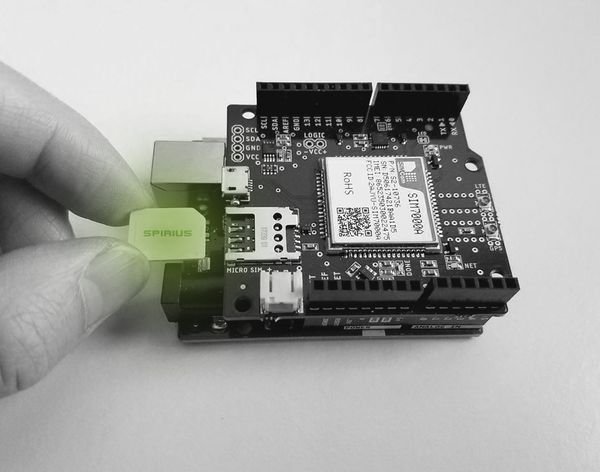Esim With Vodacom Working with eUICC Devices Overview
Esim With Vodacom eUICC (eSIM) Overview

The emergence of the Internet of Things (IoT) has remodeled numerous sectors, particularly in industrial applications. As machines, units, and systems turn out to be more and more interconnected, the potential for enhanced effectivity and productiveness grows. However, this connectivity comes with a variety of challenges that corporations should navigate to completely understand the advantages of IoT in industrial environments.
One of the first challenges of IoT connectivity is the dearth of standardization. Different manufacturers often use proprietary protocols, making it tough for devices from various vendors to communicate seamlessly. Without a universal standard, companies may face compatibility points, resulting in increased costs and a fancy integration course of. This fragmentation not solely hampers communication but additionally prevents organizations from avoiding vendor lock-in.
Another significant obstacle is the security of IoT devices. The interconnected nature of business functions opens up a quantity of entry points for potential cyberattacks. Industrial IoT units typically house sensitive data and management important equipment. As extra units come online, attackers might exploit vulnerabilities, inflicting severe disruptions. A strong safety framework that addresses each device-level and network-level threats is important for safeguarding these methods.
Esim Vodacom Sa IoT eUICC Overview of eSIM

Data management additionally presents main challenges in IoT connectivity. Industrial applications generate huge quantities of data, which have to be collected, analyzed, and utilized successfully. Organizations often wrestle with tips on how to store and process this information, especially when coping with real-time requirements. Delays in processing can lead to inefficient operations, negating the advantages of IoT adoption. Implementing superior data analytics and utilizing edge computing might help mitigate these points.
Network reliability is a vital factor in making certain clean IoT operation. In industrial environments, connectivity is usually topic to interference from varied sources, including heavy equipment and steel constructions. Such factors can result in inconsistent communication and information loss. Companies must put cash into sturdy network infrastructure, such as industrial-grade routers and enhanced wireless technologies, to attenuate disruptions and ensure reliability.
Scalability is one other concern for organizations looking to implement IoT solutions. As industrial purposes increase, the variety of connected devices will increase. Many legacy methods is probably not equipped to handle this influx, causing bottlenecks. Companies ought to contemplate options that may scale with their operations, guaranteeing that their IoT infrastructure stays environment friendly as they grow.
Esim Uk Europe Guide to eUICC Deployments
Compliance with regulations poses additional challenges in IoT connectivity (Use Esim Or Physical Sim). Different sectors have specific laws concerning information protection, safety, and operational standards. Keeping up with these regulations is essential for avoiding penalties and sustaining operational integrity. Organizations must develop strategies that incorporate compliance into their IoT frameworks.
The interoperability of systems is a persistent issue within industrial applications. When devices from numerous manufacturers work together, the shortage of a typical communication platform can result in information silos. This fragmentation can stifle innovation and restrict the full benefits of IoT. Building an ecosystem where devices can work together successfully is significant to allow seamless information circulate.
Energy consumption is usually overlooked but performs a major position in IoT connectivity challenges. Many IoT units are battery-powered, and managing energy consumption turns into important in extending gadget lifespans. Efficient energy administration systems can help optimize device efficiency and scale back operational costs, allowing for the sustainable operation of IoT solutions in industrial environments.
Employee coaching and consciousness is an important but usually uncared for aspect of IoT implementation. Workers may not be conversant in new technologies or the potential vulnerabilities associated with them. Organizations must spend cash on training programs to ensure that staff perceive the means to function, maintain, and safe IoT gadgets effectively. This data is important for minimizing human error and making certain a easy transition to more automated processes.
Use Esim Or Physical Sim SIM, iSIM, eSIM Differences Explained
Finally, the integration of legacy techniques poses a major connectivity problem. Many industrial operations rely on older machinery that won't support IoT-friendly protocols. Finding ways to bridge the hole between legacy techniques and trendy IoT options is important for capitalizing on new technologies without completely overhauling existing infrastructure. Strategies like retrofitting equipment with IoT-enabled sensors can present a sensible resolution.
The roadmap to overcoming IoT connectivity challenges in industrial applications is multifaceted. Prioritizing standardization and security can pave the finest way for smoother integrations. Moreover, investing in robust infrastructure is essential to make sure reliable network efficiency. Addressing scalability and compliance issues will assist organizations place themselves for future advancements and changing rules.
As industries more and more embrace IoT, the importance of interoperability cannot be confused sufficient. Cultivating an environment of seamless communication across units can unlock new opportunities for insights and operational effectivity. Harnessing knowledge successfully will require organizations to undertake superior analytics and possibly even artificial intelligence.
Esim Vs Normal Sim Working with eUICC Devices Overview
Training workers see this here to navigate the complexities of IoT will serve as a foundational step towards minimizing dangers associated with connectivity. This skilled workforce can then contribute to optimizing processes and overcoming any unexpected obstacles that arise. Monitoring energy consumption will play an essential role in sustaining economic viability while adopting IoT options.
Engaging with stakeholders, together with OEMs and repair providers, will be pivotal in developing dependable and customised IoT functions tailor-made to particular industrial needs. By cultivating these relationships, organizations can ensure higher assist for the implementation and ongoing administration of their IoT methods.
Evaluating the cost implications of IoT connectivity can also be necessary for organizations to gauge the return on funding. Understanding how initial expenditures transform into long-term benefits will help in formulating a strategic business case for IoT adoption.
Esim Vs Normal Sim Device Services Identity Scheme
In abstract, whereas IoT connectivity challenges in industrial purposes may seem daunting, they are often strategically managed. The potential benefits, from improved efficiency to enhanced data-driven decision-making, make these challenges worth addressing. By prioritizing safety, scalability, interoperability, and workforce training, organizations can harness the total potential of IoT of their industrial settings. The journey of integrating IoT isn't merely a technological shift but a comprehensive transformation of operations.

- Limited vary of wi-fi technologies can result in connectivity issues in sprawling industrial environments where infrastructure isn't uniformly established.
- High security dangers related to IoT gadgets necessitate sturdy encryption methods whereas often requiring complicated integration with present safety protocols.
- Interoperability challenges come up when completely different manufacturers’ units make the most of various communication standards, complicating system integrations and information sharing.
- The variability of community reliability, particularly in remote or harsh environments, can adversely influence real-time data transmission essential for operational efficiency.
- Scalability concerns can emerge as organizations expand their IoT deployments, potentially resulting in community congestion and degraded efficiency if not correctly managed.
- Power management becomes crucial, especially for battery-operated devices; inadequate energy efficiency can result in frequent maintenance and decreased operational uptime.
- Data overload is a typical problem as industrial IoT generates immense volumes of information, necessitating efficient strategies for processing and analyzing it in meaningful methods.
- Compliance with industry-specific rules and standards can complicate implementation and ongoing maintenance, straining resources and delaying deployment.
- Environmental components, such as electromagnetic interference or physical barriers, can negatively have an effect on the efficiency of IoT connectivity solutions used in industrial settings.
- Legacy systems and infrastructure could not seamlessly integrate with modern IoT solutions, requiring substantial funding in upgrades to realize optimum connectivity and performance.undefinedWhat are the widespread IoT connectivity challenges faced in industrial environments?
Euicc Vs Uicc Understanding eUICC and eSIM
Industrial environments typically expertise issues such as inconsistent network coverage, interference from equipment, and the sheer scale of units requiring connectivity. These elements can hinder knowledge transmission and reliability, impacting general operations.
How does sign interference affect IoT efficiency in industrial settings?
Use Esim Or Physical Sim eSIM (eUICC) Information
Signal interference can come from machinery, metals, and other devices that disrupt wireless signals. This can result in reduced data transfer rates and increased latency, making it crucial to conduct website assessments to find out optimal communication methods.
What role does network infrastructure play in IoT connectivity challenges?
Which Networks Support Esim South Africa Multi-IMSI, eSIM, eUICC Acronyms Explained
The existing community infrastructure can considerably impression IoT efficiency. Legacy systems might not assist modern IoT units or the quantity of data they generate, leading to bottlenecks (Esim Uk Europe). Upgrading infrastructure can enhance connectivity and reliability.
Are there security concerns related to IoT connectivity in industrial applications?
Yes, security is a serious concern. Many IoT gadgets could lack sturdy security measures, making them susceptible to cyberattacks. Implementing strong authentication, article encryption, and regular firmware updates is crucial to safeguard important data and systems.
How can industrial companies improve IoT connectivity challenges?
What Is Vodacom Esim eUICC/eSIM Solutions for IoT
Companies can enhance connectivity by investing in robust networking solutions, conducting regular assessments, optimizing gadget placement, and using edge computing to course of information nearer to the source, decreasing latency and enhancing efficiency.
What technologies are best for bettering IoT connectivity?
Technologies corresponding to 5G, LPWAN (Low Power Wide Area Network), and mesh networks are effective in enhancing IoT connectivity. They provide greater coverage, improved device density support, and lower latency, catering to the unique wants of business functions.
Esim Uk Europe eUICC, eSIM, Multi IMSI Overview
How do environmental elements influence IoT connectivity in industrial applications?

Environmental elements like temperature extremes, humidity, and dust can affect gadget efficiency and connectivity. Choosing IoT devices rated for harsh environments and guaranteeing proper set up can mitigate these challenges.
What costs are associated with addressing IoT connectivity challenges?
Which Networks Support Esim South Africa Understanding eUICC Importance Glossary
Addressing connectivity challenges might contain prices associated to upgrading infrastructure, acquiring new technologies, and implementing security measures. A cost-benefit evaluation is advisable to determine the most effective options that ensure an excellent return on investment.
Can training workers mitigate IoT connectivity issues?
Yes, training workers on greatest practices for operating and maintaining IoT units can reduce connectivity points. Knowledgeable staff can troubleshoot issues quickly and leverage technologies successfully, enhancing general system performance.